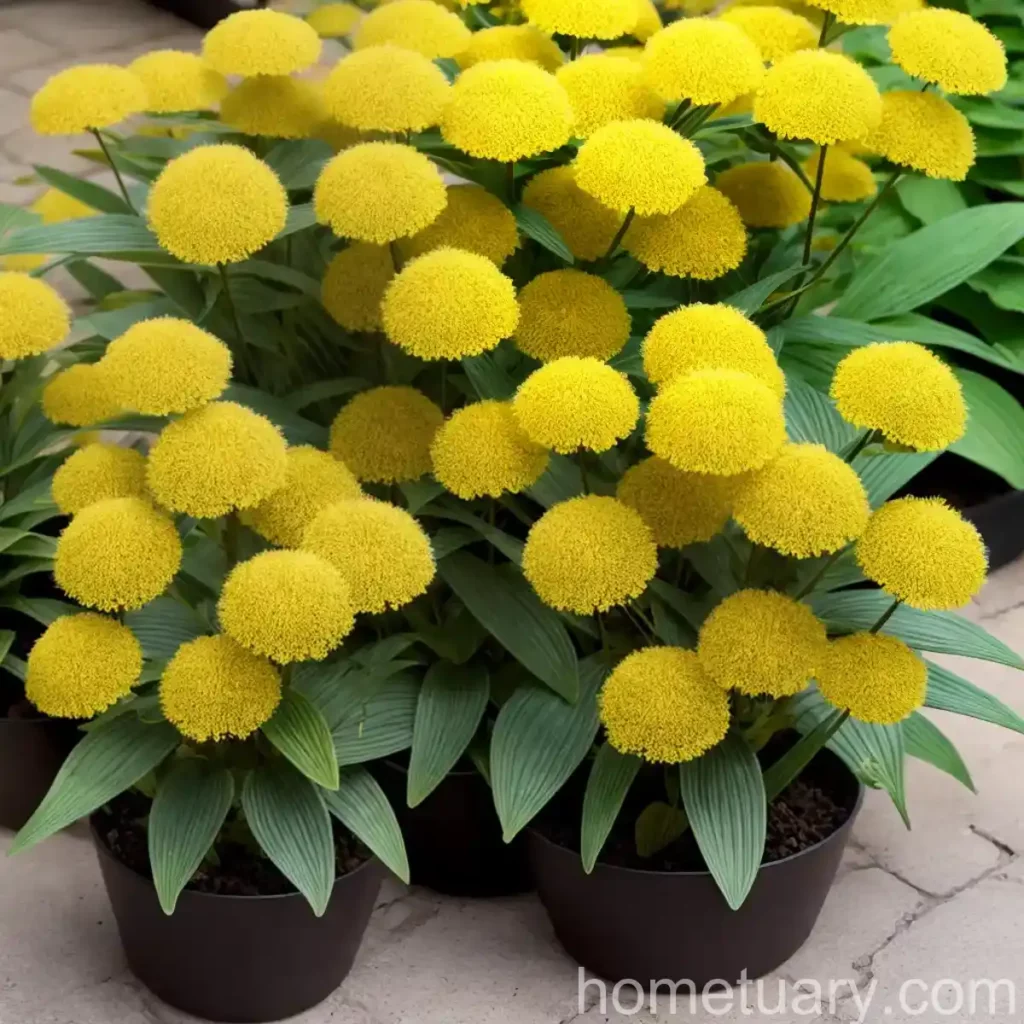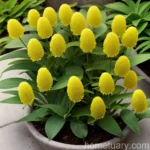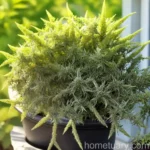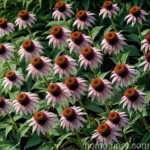Melampodium divaricatum ‘Derby’: A Comprehensive Guide to Plant Care and Maintenance
Melampodium divaricatum, commonly known as ‘Derby’, is a striking plant that adds vibrancy to any garden or landscape. With its cheerful yellow flowers and low-maintenance nature, it has become a popular choice among gardeners and landscapers alike. In this comprehensive guide, we will delve into the various aspects of caring for and maintaining Melampodium divaricatum, including its cultural requirements, uses, propagation, common diseases, and much more.
What is Melampodium divaricatum ‘Derby’?
Melampodium divaricatum ‘Derby’ is a perennial flowering plant that belongs to the Asteraceae family. It is native to Mexico and other parts of Central America. This plant is known for its compact growth habit and profusion of small, daisy-like yellow flowers that bloom throughout the summer and into the fall.
‘Melampodium‘ refers to the genus of plants, while ‘divaricatum‘ is the specific species within the genus. The ‘Derby’ cultivar is particularly admired for its tidy, mounded growth and its ability to attract pollinators such as butterflies and bees.
Key Takeaways – Melampodium divaricatum ‘Derby’
Before delving into the specific care and maintenance requirements of Melampodium divaricatum ‘Derby’, let’s summarize some key takeaways about this delightful plant:
- Cultural Uses: Melampodium divaricatum is commonly used in garden borders, mixed plantings, and as an attractive ground cover.
- Water: It has moderate watering needs and is relatively drought-tolerant once established.
- Sunlight: This plant thrives in full sunlight and is known for its remarkable tolerance to heat.
- Fertilizer: While not excessively demanding, Melampodium divaricatum benefits from occasional fertilization to support healthy growth and flowering.
- Soil: Well-draining, moderately fertile soil is ideal for this plant to prevent issues with root rot.
- Pruning: Minimal pruning is required, primarily to remove spent flowers and maintain a compact shape.
- Propagation: Propagation can be achieved through division and from seeds.
- Container Popularity: Melampodium divaricatum is well-suited to container gardening due to its compact size and attractive appearance.
- Common Diseases: This plant exhibits good disease resistance; however, some preventive measures may be necessary.
- Common Pests: While relatively pest-resistant, occasional monitoring for pests is recommended.
- Companion Plants: ‘Derby’ complements a variety of other flowering plants and is often used alongside them to create visually appealing mixed plantings.
- Landscape Uses: It is widely used in landscape design for its vibrant flowers and low-maintenance nature.
- Flower Characteristics: The bright yellow flowers of Melampodium divaricatum ‘Derby’ add a splash of color to any garden.
- Growth Habit and Size: With its compact growth habit, this plant is ideal for small gardens and containers.
Having grasped the key takeaways, let’s explore each of these aspects in greater detail.
Culture
Melampodium divaricatum ‘Derby’ is a relatively undemanding plant in terms of cultural requirements, making it a favorite among gardeners and landscapers seeking low-maintenance, visually appealing options. Here are some critical cultural aspects to consider when growing and caring for this plant:
Water
This plant has moderate water needs and exhibits good drought tolerance once established. Proper watering is crucial during the establishment phase to promote strong root development. Regular watering is essential during dry periods to ensure that the soil does not dry out entirely, particularly in areas with intense sunlight and high temperatures.
Ensuring adequate drainage is important to prevent waterlogging, which can lead to root rot. While Melampodium divaricatum can withstand short periods of dry soil, it is essential to water it thoroughly when the top inch of soil feels dry to the touch.
Sunlight
Melampodium divaricatum thrives in full sunlight and is well-adapted to hot, sunny conditions. It is essential to provide this plant with at least 6-8 hours of direct sunlight each day to promote healthy growth and prolific flowering. In shadier conditions, the plant may become leggy and produce fewer flowers.
When selecting a location for planting or positioning containers, opt for areas that receive abundant sunlight throughout the day, particularly during the growing season. Ample sunlight is crucial for the development of robust foliage and an abundance of cheerful yellow blooms.
Fertilizer
While Melampodium divaricatum is not overly demanding when it comes to fertilizer, providing it with some supplemental nutrients can enhance its overall health and flowering performance. A balanced, all-purpose fertilizer can be applied in spring to provide the plant with the necessary nutrients to support its growth and flowering.
Select a fertilizer with a balanced NPK ratio, such as 10-10-10 or 20-20-20, and apply it according to the manufacturer’s instructions. Avoid over-fertilization, as excessive nitrogen can lead to vigorous foliage growth at the expense of flowering. A light application of fertilizer in early spring and again in mid-summer can help maintain healthy and vibrant plants.
Soil
Melampodium divaricatum prefers well-draining, moderately fertile soil for optimal growth. Soil that retains too much water can lead to root rot and other issues, so it is crucial to ensure proper drainage, particularly in areas with heavy clay soil.
Prior to planting, amending the soil with organic matter, such as compost, can enhance its structure and fertility. This not only improves drainage but also provides the plant with essential nutrients as the organic matter decomposes over time. Aim for a slightly acidic to neutral pH range, typically between 6.0 and 7.0, for optimal growth.
Pruning
Minimal pruning is required for Melampodium divaricatum ‘Derby’, as it naturally maintains a tidy, compact growth habit. However, deadheading, or the removal of spent flowers, can encourage the plant to continue producing new blooms and maintain a neat appearance. Simply pinch or snip off faded flowers to prevent the plant from expending energy on seed production and to prolong the flowering period.
In early spring, inspect the plant for any dead or damaged branches and remove them to promote healthy growth. Avoid excessive pruning, as Melampodium divaricatum blooms on new growth, and overzealous pruning can limit flowering.
Propagation
Melampodium divaricatum can be propagated through several methods, providing gardeners with options to expand their plantings or share this delightful plant with others. The most common methods of propagation for ‘Derby’ include division and seed propagation.
Division
Dividing established clumps of Melampodium divaricatum is a straightforward method of propagation. This is typically done in early spring, before new growth emerges. Carefully dig up the clump and gently separate the individual plants, ensuring that each division has a healthy root system attached. Plant the divisions into prepared soil at the same depth as the parent plant and water them thoroughly to settle the soil and promote rapid establishment.
Seed Propagation
Melampodium divaricatum can also be propagated from seeds, offering an affordable and rewarding option for expanding your plantings. The seeds are typically sown indoors 6-8 weeks before the last expected frost date. Sow the seeds in trays or pots filled with a well-draining seed starting mix and lightly cover them with a thin layer of growing medium.
Keep the soil consistently moist and maintain a temperature of around 70-75°F (21-24°C) for optimal germination. Once the seedlings have developed several sets of true leaves, they can be gradually hardened off and planted in their permanent locations outdoors after the last frost has passed.
Container Popularity
Melampodium divaricatum ‘Derby’ is well-suited to container gardening, making it an excellent choice for individuals with limited garden space or those who wish to adorn their patios, balconies, or outdoor living areas with vibrant, low-maintenance plants. When grown in containers, ‘Derby’ can serve as a focal point, combined with other flowering plants for colorful mixed plantings, or as a delightful addition to a sunny terrace garden.
Select a container with adequate drainage holes to prevent waterlogging, and fill it with a well-draining potting mix that is rich in organic matter. Ensure that the container receives ample sunlight, as this is crucial for the plant’s overall health and flowering performance. While container-grown plants may require more frequent watering than those in the ground, it is essential to avoid overwatering to prevent waterlogged soil and root rot.
Common Diseases
Melampodium divaricatum ‘Derby’ exhibits good resistance to most common plant diseases, particularly when grown under favorable cultural conditions. However, as with any plant, it is essential to remain vigilant and take preventive measures to minimize the risk of disease development. Some of the common diseases that may affect this plant include:
-
Powdery Mildew: This fungal disease can manifest as a powdery white coating on the leaves, stems, and flowers, leading to stunted growth and reduced flowering. To prevent powdery mildew, ensure proper air circulation, avoid overhead watering, and remove and destroy affected plant parts.
-
Root Rot: Overly wet soil and poor drainage can lead to root rot, which is characterized by wilting, yellowing foliage, and a foul odor emanating from the roots. To prevent root rot, provide well-draining soil and avoid overwatering the plant.
-
Leaf Spot: Leaf spot diseases can cause dark, water-soaked lesions on the foliage, leading to defoliation and weakened plants. To minimize the risk of leaf spot, avoid overhead watering, provide adequate spacing between plants to promote air circulation, and promptly remove and dispose of any affected leaves.
Maintaining good cultural practices, such as proper watering, adequate spacing between plants, and regular inspection for signs of disease, can go a long way in preventing the onset and spread of common plant diseases.
Disease Diagnosis
Diagnosing plant diseases can be challenging, as many symptoms overlap between different pathogens and environmental stressors. When assessing potential disease issues on Melampodium divaricatum ‘Derby’, consider the following steps to aid in accurate diagnosis:
-
Visual Inspection: Carefully examine the plant for any unusual symptoms, including spots on the leaves, wilting, yellowing, or stunted growth. Take note of any specific patterns or characteristics associated with the symptoms, such as the color and shape of lesions.
-
Environmental Conditions: Consider the prevailing environmental conditions, such as temperature, humidity, and moisture levels, as these can influence the development and spread of certain diseases.
-
History: Review the plant’s history, including watering practices, fertilizer applications, and any recent changes in its growing environment. Identifying any recent stressors or changes can provide valuable clues regarding the potential cause of the symptoms.
-
Professional Assistance: If you encounter persistent or severe issues with Melampodium divaricatum, do not hesitate to seek assistance from a local extension office or plant health specialist. They can provide expert guidance and may recommend suitable treatment options, if necessary.
Prompt diagnosis and appropriate corrective measures can help mitigate the impact of plant diseases and promote the overall health and vitality of Melampodium divaricatum.
Common Pests
Melampodium divaricatum ‘Derby’ is relatively resistant to most common garden pests, thanks to its robust nature and natural defenses. However, occasional monitoring is advisable to detect and address potential pest issues early on. Some pests that may occasionally pose a threat to this plant include:
-
Aphids: These small, soft-bodied insects can cluster on the undersides of leaves and feed on plant sap, leading to distorted foliage and reduced plant vigor. Regularly inspect the plant for aphid colonies, and use insecticidal soap or a strong stream of water to dislodge and control them.
-
Spider Mites: These tiny arthropods can cause stippling, webbing, and yellowing of leaves as they feed on plant tissues. Increase humidity levels and apply horticultural oil to mitigate spider mite infestations.
-
Whiteflies: These small, white, moth-like insects can congregate on the undersides of leaves and can cause yellowing, wilting, and reduced plant vigor. Use yellow sticky traps and insecticidal soap to monitor and manage whitefly populations.
By practicing good garden hygiene, encouraging natural predators, and promptly addressing potential pest issues, gardeners can maintain healthy and thriving Melampodium divaricatum plants.
Botanist’s Tips
Choosing Companion Plants
When selecting companion plants to grow alongside Melampodium divaricatum ‘Derby’, consider options that complement its vibrant yellow flowers and cultural preferences. Some suitable companions for ‘Derby’ include:
-
Lantana: With its colorful flower clusters and similar sun and water requirements, lantana makes an excellent companion plant for Melampodium divaricatum.
-
Portulaca: Also known as moss rose, portulaca features vibrant, jewel-toned flowers and thrives in sunny, well-drained locations, making it an ideal partner for ‘Derby’.
-
Salvia: Salvias, with their diverse flower colors and long bloom periods, offer striking contrast and visual interest when grown alongside Melampodium divaricatum.
-
Zinnia: These cheerful annuals come in a variety of bright colors and, like ‘Derby’, prefer full sunlight and moderately fertile soil.
Enhancing Summer Gardens
In summer gardens, Melampodium divaricatum ‘Derby’ can serve as a dynamic focal point, contributing to the colorful tapestry of flowering plants. Here are some considerations for enhancing your summer garden with this delightful plant:
-
Colorful Borders: Plant ‘Derby’ along garden borders to infuse the setting with vibrant yellow blooms, creating an inviting and cheerful atmosphere.
-
Container Displays: Utilize containers filled with ‘Derby’ and complementary annuals to adorn patios, decks, or outdoor dining areas with an explosion of summer color.
-
Butterfly Gardens: Capitalize on the butterfly-attracting qualities of Melampodium divaricatum by incorporating it into butterfly-friendly gardens alongside other nectar-rich plants.
-
Mixed Plantings: Combine ‘Derby’ with other summer-flowering perennials and annuals to create visually captivating and diverse mixed plantings.
Maximizing Landscape Appeal
The landscape appeal of Melampodium divaricatum ‘Derby’ extends beyond its vibrant blooms, offering multifaceted contributions to outdoor spaces. Consider the following to maximize the landscape appeal of this plant:
-
Ground Cover: Use ‘Derby’ as a low-growing ground cover in sunny areas to suppress weeds and create a cohesive, visually appealing carpet of yellow flowers.
-
Garden Borders: The compact nature and vibrant blooms of Melampodium divaricatum make it a natural choice for lining garden borders, adding a splash of color and structure.
-
Mass Plantings: Envision creating swathes of yellow by mass planting ‘Derby’ in key locations to achieve a dramatic visual impact and unify the landscape.
-
Rock Gardens: Incorporate ‘Derby’ into rock gardens to introduce bright color and foliage contrast amidst the rugged textures of rocks and boulders.
Fun Facts
-
Vibrant Color: The bright yellow flowers of Melampodium divaricatum ‘Derby’ are a magnet for pollinators and add a burst of color to any garden or landscape setting.
-
Drought Tolerance: This plant exhibits commendable drought tolerance once established, making it a resilient and reliable addition to low-water landscapes.
-
Pollinator Magnet: ‘Derby’ is highly attractive to pollinators such as butterflies and bees, contributing to the overall health and biodiversity of the garden.
-
Low Maintenance: With its minimal pruning and moderate cultural requirements, Melampodium divaricatum ‘Derby’ is an excellent choice for busy gardeners seeking a hassle-free plant.
-
Compact Growth: The compact, mounded growth habit of ‘Derby’ makes it an ideal option for small gardens, containers, and mixed plantings, adding versatility to its charm.
Links to External Resources
To further expand your knowledge and appreciation of Melampodium divaricatum ‘Derby’, consider exploring the following external resources:
-
Melampodium divaricatum ‘Derby’ Care Tips – Plant Care Today
-
Melampodium divaricatum ‘Derby’ – Texas A&M AgriLife Extension
Conclusion
Melampodium divaricatum ‘Derby’ stands as a testament to the enchanting beauty and resilience of plant life. With its cheerful yellow flowers, low-maintenance nature, and versatile applications in garden and landscape settings, it has earned its place as an invaluable addition to the horticultural world.
By understanding and implementing the cultural practices, propagation methods, and landscape applications described in this guide, you can take full advantage of the many benefits that Melampodium divaricatum ‘Derby’ has to offer. Whether adorning a sunny border, gracing a container display, or forming part of a diverse mixed planting, this plant is sure to captivate and inspire all who encounter it.
With its vibrant colors, hardiness, and pollinator-friendly nature, Melampodium divaricatum ‘Derby’ invites you to partake in the celebration of nature’s splendor while adding a touch of radiance to your outdoor spaces. Embrace this remarkable plant, and let its sunny disposition brighten your gardening endeavors.















